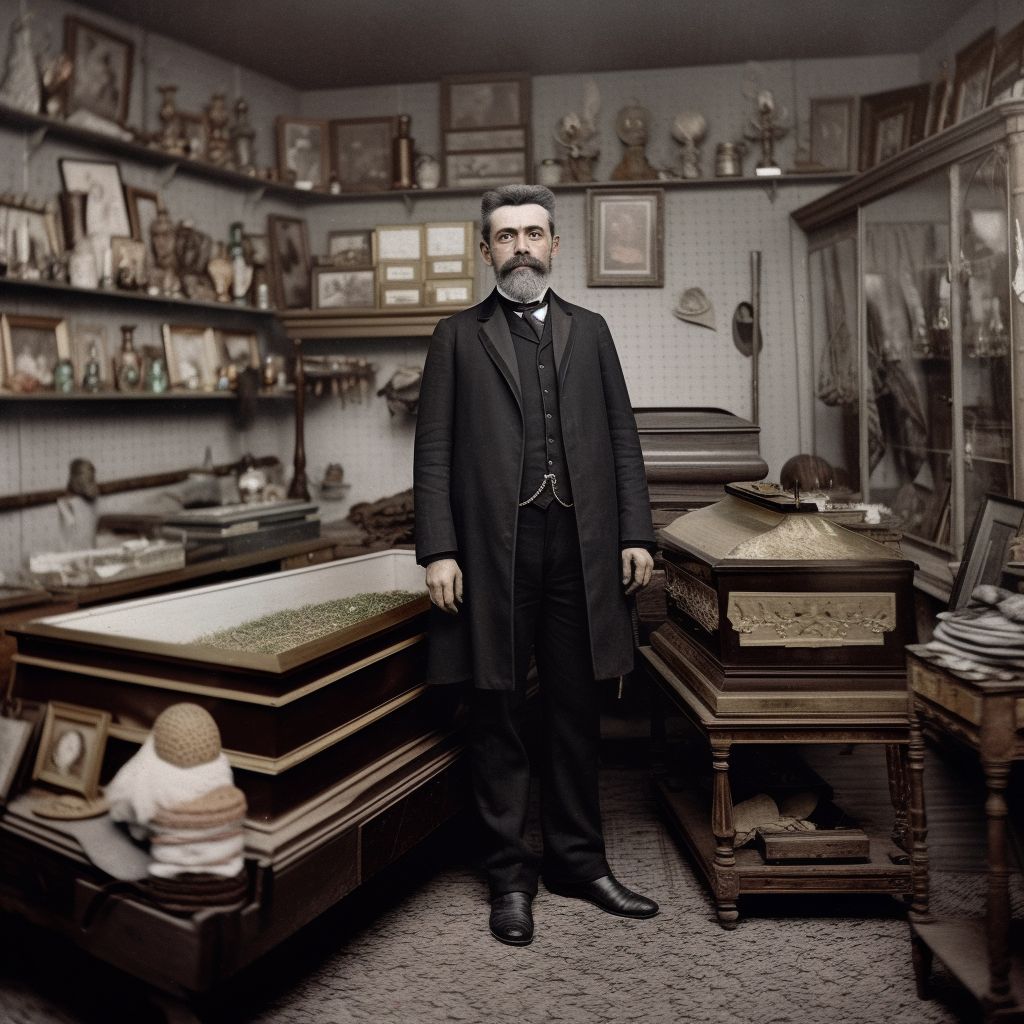Undertaker/Mortician
Undertakers have long played an essential role in society, providing vital services in the respectful handling and care of the deceased. As the 19th century progressed, the undertaker profession in the United States evolved and adapted to the rapid changes brought on by the industrial revolution and the introduction of new technologies. By 1880, undertakers were incorporating modern innovations into their work, such as cold body lockers and electric lighting, enhancing their ability to care for the deceased and provide solace to grieving families.
The Role of Undertakers
Undertakers in the 19th century were responsible for a wide range of tasks related to the care and disposition of the deceased. Their duties included embalming, preparing the body for burial or cremation, arranging funerals, and providing support to bereaved families. Undertakers were also charged with managing the logistical aspects of death care, such as transportation of the deceased and coordination with cemeteries and religious institutions.
In addition to their practical responsibilities, undertakers played an essential role in shaping cultural norms and rituals surrounding death and mourning. They were often called upon to offer guidance to grieving families on appropriate customs and etiquette, helping to ensure that the memory of the deceased was honored with dignity and respect.
Innovations in the Death Care Industry
The latter part of the 19th century saw significant advancements in technology that had a profound impact on the undertaker profession. One such innovation was the introduction of cold body lockers, produced by Morgan's Mechanicals. These morgue lockers offered a more efficient and sanitary method of storing the deceased, running on electricity and providing adjustable temperature control. The lockers could accommodate between six and eighteen bodies, with larger organizations having the option to connect multiple units for increased storage capacity.
Another notable advancement was the widespread adoption of Tesla light bulbs from Morgan's Mechanicals, which provided reliable, efficient electric lighting. This innovation greatly improved the working conditions for undertakers and allowed them to perform their duties with greater precision and care.
The Role of Auto Sapient Automatons
While auto sapient automatons had begun to make their mark in various industries by 1880, their use within the death care industry was still relatively limited. Only the most affluent funeral homes employed steely labor to assist with tasks such as preparing bodies for burial and carrying heavy items like coffins. The high cost of these machines meant that they were beyond the reach of many smaller, family-run funeral homes. However, those who were able to utilize auto sapient automatons found them to be valuable assets in their work, offering increased efficiency and precision in the handling and care of the deceased.
Conclusion
By 1880, the undertaker profession in the United States had embraced the technological advances of the era, incorporating innovations such as cold body lockers and electric lighting into their daily work. While the use of auto sapient automatons was still limited in the death care industry, those who were able to afford such advanced technology found it to be a valuable asset in their pursuit of providing compassionate and dignified care for the deceased and their families.
The undertaker profession's ability to adapt to the rapidly changing landscape of the 19th century is a testament to the resilience and dedication of these professionals, who played a crucial role in shaping societal norms and rituals surrounding death and mourning. As the century drew to a close, undertakers continued to evolve and adapt, ensuring that they remained at the forefront of the changing needs and expectations of the communities they served.
Type
Public Services

